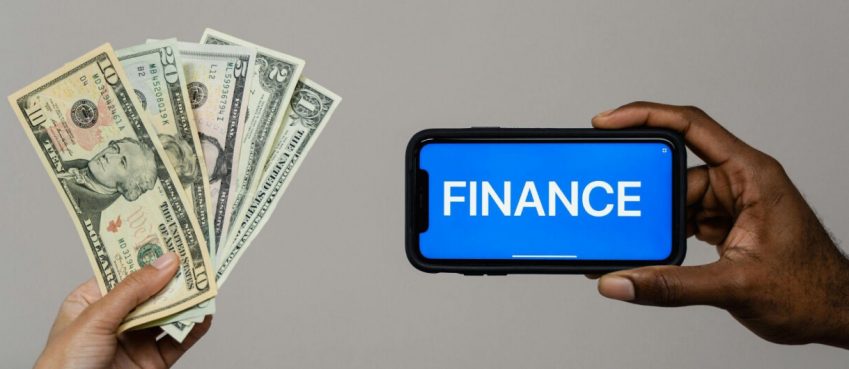
If there is one industry that grew exponentially during Covid-19, and still continues to do so, it’s Fintech.
Fintech refers to the “financial technology” that overlaps with both banking and payment processing systems.
While there are many ways of defining it, it generally refers to any organization or service that provides financial products and services using technology. This usually includes software or virtual apps instead of traditional brick-and-mortar channels. Like physical banks or ATM payment processors.
This also includes all branches of digital banking, payment processing, Fintech startups, and financial data providers. All under one umbrella basically.
Making Financial Services Affordable
With the introduction of Fintech, banks were suddenly under incredible pressure to stay competitive. Especially during the early days of Covid-19. The need for digital payment solutions rose exponentially and with this changing landscape, solutions were needed fast.
Whether you were getting a payday loan in Toronto, or some personal loan in Australia, now the only way to do it was online, or in some other digital manner. This cut down costs and made things quite affordable for the masses.
Due to this, there has been a massive increase in the number of Fintech companies worldwide.
As these new ventures are growing, traditional banks are taking note and making plans to enter the space themselves.
For example, The Bank of England and Bank of Canada joined World Bank and launched a new global Fintech initiative in Paris.
The new initiative, dubbed “Fintech Lab,” was founded to help countries around the world establish themselves as global Fintech hubs. Fintech Lab will also be focused on promoting financial inclusion, including financial literacy for all
The Cambridge Centre for Alternative Finance Fintech is looking to transform how innovation and creativity in finance happens. It serves as a hub of knowledge and expertise that will help shape the future of financial services. It will be instrumental in shaping leading-edge solutions, new methods and creative applications for this industry.
The centre has received support from the High-Level Group on Financing and Innovation and it is also one of two UK global centres designated by Innovate UK.
Also read: Blocked On Snapchat: Figure Out What-To-Do, The Fixes, and FAQs
Developing Countries Love Fintech
Due to Covid-19, the underdeveloped banking infrastructure in developing countries needed a complete overhaul. This time was seen as an opportunity to bring in new innovative ideas from the Fintech space. To completely change and revolutionize their current systems.
This has helped tremendously. Especially the continent of Africa. Where people can fulfill their banking needs just through their phone now. Before, they didn’t even have access to real banks. If they did, it was very limited and complex.
Africa’s internet costs are quite high. Now the hope is maybe Fintech can find an indirect solution to reduce these costs as well.
No matter how you look at it, it seems like Fintech is here to stay.
As long as there are products and services that cut costs, Fintech is simply destined to grow in the developing world.
Also read: Top 7 Best ECommerce Tools for Online Business
This Trend Will Continue
From the COVID-19 FinTech Market Rapid Assessment Study, the global Fintech market is expected to grow at a CAGR of over 40% in 2021.
The COVID-19 FinTech market is growing rapidly in recent years because of innovations in technology. The study predicts that it will reach USD 780 billion by 2021.
There are various factors that are driving this rapid growth in the industry. These include rapid technological advancements, the evolution of financial services, increased penetration of the internet and social media, and regulatory framework changes.
The study also indicates that blockchain will be one of the most disruptive technologies for the finance sector in 2021 and beyond.
As it offers faster transactions with lower costs to businesses and consumers. Blockchain is also becoming known as Fintech 2.0.
Let’s see what happens in this very exciting space as it continues to expand by leaps and bounds.
Top 10 News
-
01
Top 10 Deep Learning Multimodal Models & Their Uses
Tuesday August 12, 2025
-
02
10 Google AI Mode Facts That Every SEOs Should Know (And Wha...
Friday July 4, 2025
-
03
Top 10 visionOS 26 Features & Announcement (With Video)
Thursday June 12, 2025
-
04
Top 10 Veo 3 AI Video Generators in 2025 (Compared & Te...
Tuesday June 10, 2025
-
05
Top 10 AI GPUs That Can Increase Work Productivity By 30% (W...
Wednesday May 28, 2025
-
06
[10 BEST] AI Influencer Generator Apps Trending Right Now
Monday March 17, 2025
-
07
The 10 Best Companies Providing Electric Fencing For Busines...
Tuesday March 11, 2025
-
08
Top 10 Social Security Fairness Act Benefits In 2025
Wednesday March 5, 2025
-
09
Top 10 AI Infrastructure Companies In The World
Tuesday February 11, 2025
-
10
What Are Top 10 Blood Thinners To Minimize Heart Disease?
Wednesday January 22, 2025







